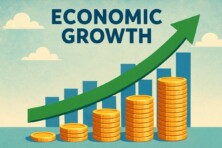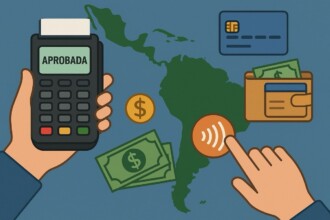According to media reports, during the period of high interest rates in the United States, local banks collectively managed to earn $1 trillion.

The mentioned information was made public last Sunday, September 22, by journalists who analyzed data from Federal Deposit Insurance Corp. The corresponding analysis showed an increase in the level of yields of financial institutions belonging to the banking sector of the United States on deposits with the Federal Reserve System while maintaining low rates for many savers. Against this background, the profit margins of the specified creditors have increased.
Rates on some savings accounts grew in line with the target of the central bank of the United States of more than 5%. At the same time, the main number of US depositors, particularly clients of such industry giants as JPMorgan Chase and Bank of America, received much less.
According to media reports, throughout the year in the United States, the average bank paid depositors interest at a rate of only 2.2% per annum. It is worth noting that this indicator is 0.2% higher compared to the figure that was observed two years ago. At the same time, the specified interests are much lower than the Fed’s 5.5% overnight rate that the financial institutions themselves can get.
The media also note that the mentioned payments helped banks to make $1.1 trillion in excess interest. The corresponding figure is about half of the total dollars brought by financial institutions through the year.
It is worth noting that the mentioned information contrasts with the data recorded in Europe. In some countries of this region, there is a tax regarding banks that have benefited from higher borrowing costs.
Chris McGratty, head of US bank research at KBW, says that after the Fed has decided to cut interest rates, lenders will have the opportunity to reduce the cost of deposits. According to the expert, the degree of aggressiveness of the relevant action will vary depending on the state of affairs in which the financial institution is being.
It is worth noting that after the Fed lowered the cost of borrowing last week, some banks have already begun to take measures in response to the actions of the financial regulator. Three lenders, including BMO, Truist, and M&T, have announced their intention to reduce their prime lending rate from 8.5% to 8%.
Last week, the first easing of the monetary policy of the central bank of the United States was recorded since the coronavirus pandemic. It is worth noting that the Fed cut interest rates on a scale that turned out to be large compared to preliminary expectations regarding the specifics of this decision by the financial regulator. Expectations are also actively circulating and dominating that the central bank of the United States will adhere to a strategy of consistent monetary policy easing.
America’s Credit Unions Deputy Chief Economist Curt Long said last week that the 50 basis point lowering of borrowing costs by the Fed turned out to be more extensive than the preliminary forecast of the Federal Open Market Committee (FOMC). He also noted that the new estimates or the mentioned committee provides for lowering the cost of borrowing by another 50 basis points by the end of the current year. Moreover, a full percentage point reduction is expected in 2025.
Curt Long noted that the FOMC cut interest rates more aggressively compared to preliminary forecasts regarding the scale of this decision, acknowledging that inflation is on a downward trajectory, and at the same time, risks to the United States labor market are showing growth.
The United States сentral bank last week lowered its benchmark short-term rate to a range of 4.75% to 5% from a 23-year high of 5.25% to 5.5%.
There is still no consensus among Fed officials as to the pace and scope of further monetary policy easing. Fed Chairman Jerome Powell said that the mentioned process may accelerate or slow down depending on the state of affairs in the economic system of the United States and the dynamic of inflation.









